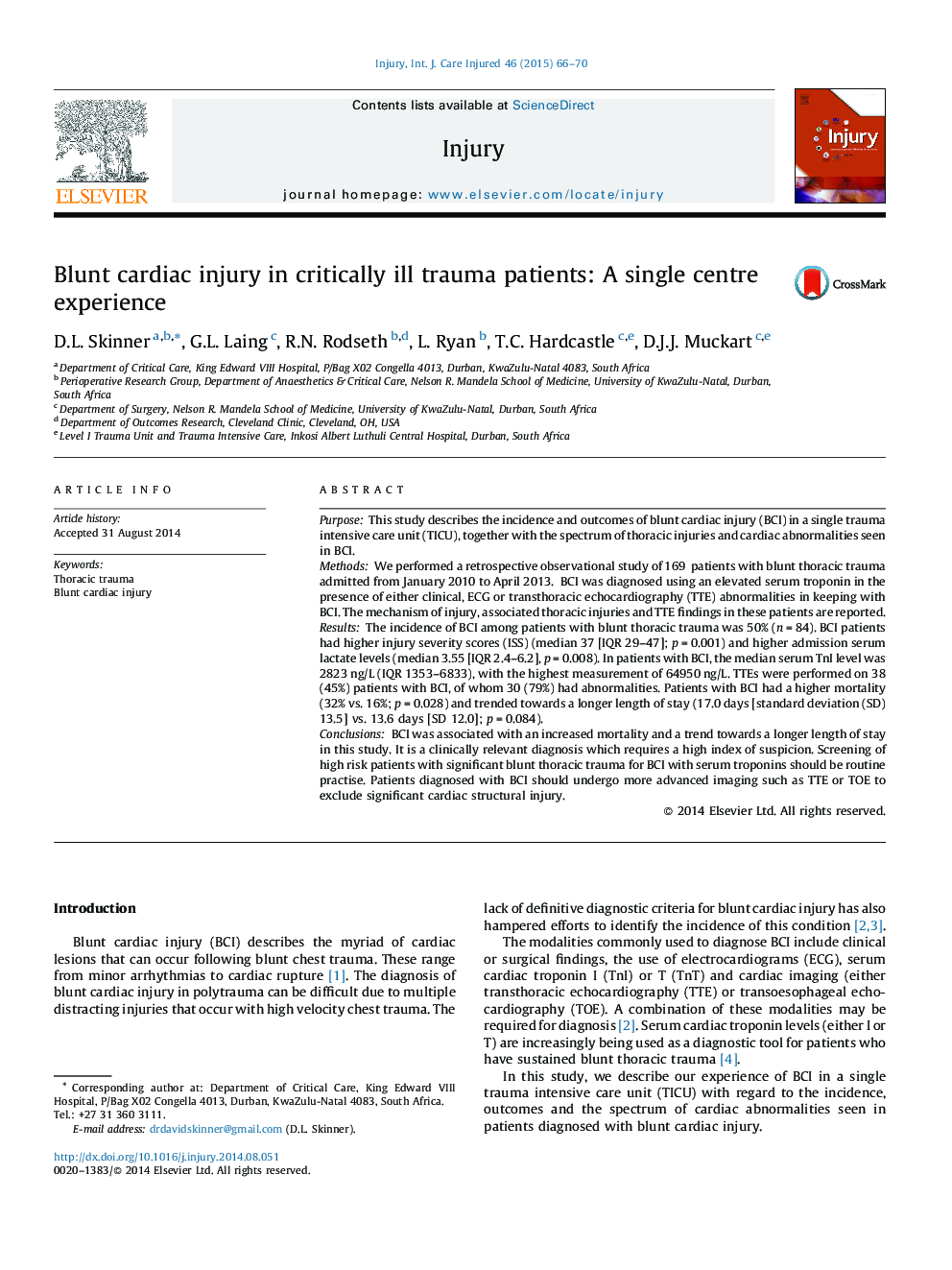| Article ID | Journal | Published Year | Pages | File Type |
|---|---|---|---|---|
| 3239172 | Injury | 2015 | 5 Pages |
PurposeThis study describes the incidence and outcomes of blunt cardiac injury (BCI) in a single trauma intensive care unit (TICU), together with the spectrum of thoracic injuries and cardiac abnormalities seen in BCI.MethodsWe performed a retrospective observational study of 169 patients with blunt thoracic trauma admitted from January 2010 to April 2013. BCI was diagnosed using an elevated serum troponin in the presence of either clinical, ECG or transthoracic echocardiography (TTE) abnormalities in keeping with BCI. The mechanism of injury, associated thoracic injuries and TTE findings in these patients are reported.ResultsThe incidence of BCI among patients with blunt thoracic trauma was 50% (n = 84). BCI patients had higher injury severity scores (ISS) (median 37 [IQR 29–47]; p = 0.001) and higher admission serum lactate levels (median 3.55 [IQR 2.4–6.2], p = 0.008). In patients with BCI, the median serum TnI level was 2823 ng/L (IQR 1353–6833), with the highest measurement of 64950 ng/L. TTEs were performed on 38 (45%) patients with BCI, of whom 30 (79%) had abnormalities. Patients with BCI had a higher mortality (32% vs. 16%; p = 0.028) and trended towards a longer length of stay (17.0 days [standard deviation (SD) 13.5] vs. 13.6 days [SD 12.0]; p = 0.084).ConclusionsBCI was associated with an increased mortality and a trend towards a longer length of stay in this study. It is a clinically relevant diagnosis which requires a high index of suspicion. Screening of high risk patients with significant blunt thoracic trauma for BCI with serum troponins should be routine practise. Patients diagnosed with BCI should undergo more advanced imaging such as TTE or TOE to exclude significant cardiac structural injury.
